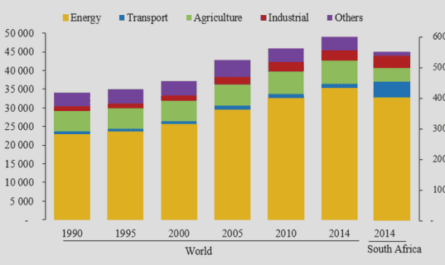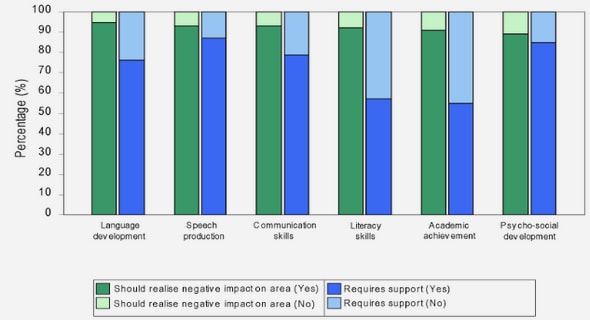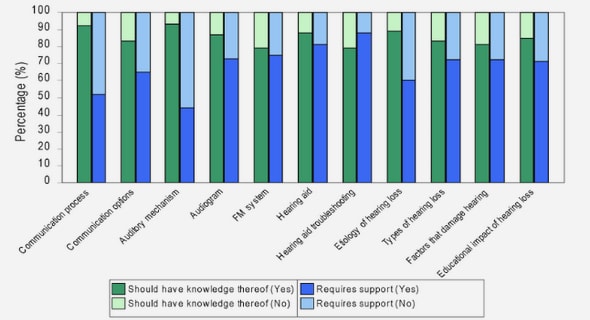Get Complete Project Material File(s) Now! »
The legal context – Changes in regulation on remuneration policy since 2008
In order to prevent new collapses in the banking sectors at that moment, governments in one hand considered using the public sources to capitalize banks; while on the other hand, they urgently looked for solutions to control bank risks. One of the first solutions given out is making changes in regulation on executive remuneration. In this section, we explore these changes in different countries since the end of 2008.
United States
Soon after Lehman Brothers filed for bankruptcy and the hasty marriage between Merrill Lynch and Bank of America which was arranged in September 2008, the ―Emergency Economic Stabilization Act‖ (EESA‖) was passed by Congress on October 3rd. ESSA at that moment was known as the most restrictions on executive pay. However, after information over bonuses of Lehman Brothers, Merrill Lynch and AIG was revealed, Congress demanded for new and more-stringent limits on executive compensation at the bailout firms. The ―American Recovery and Reinvestment Act‖ (―ARRA‖) signed on 17 February 2009 imposed.
The international standards
On 2 April, the ―Group of 20‖ (G20) leading economies decided to establish the ―Financial Stability Board‖ (―FSB‖) to monitor and make recommendations about the global financial system. On 24 September 2009, at the Pittsburgh G2 summit, the regulations over compensation proposed by the FSB were passed. The FSB Principles and Standards would apply only to the finance sector. Under these proposals, 1/ at least 40% of executive‘s bonuses or 60% for the bonuses of most senior executives would be deferred over a number of years; 2/ the deferral period should be more than three years and at least half paid should be in the form of restricted shares; 3/ Clawback provisions should be applied.
The FSB‘s proposals were recommended as a framework, leaving each country to decide its own legislation to implement. Most EU countries followed these recommendations and committed their legislation would be effective in 2010. The situation of United State was not the same. Although President Obama had agreed to the FSB framework at the Summit Pittsburgh, the United States‘ Federal Reserve – the most important banking regulator in the U.S.- rejected the FSB‘s recommendations, arguing that ―for most banking organizations, the use of a single formulaic approach to making employee incentive compensation arrangements appropriately risk sensitive is likely to provide at least some employees with incentives to take excessive risks‖ 18.
Based on the assumption that ―excessive and imprudent risk-taking in the banking sector has led to the failure of individual financial institutions and systemic problems in Member States and globally‖19, the ―Committee of European Banking Supervisors‖ (―CEBS‖) then issued its final rules over compensation in banking sector on the 10 December 2010. Table 4 details contents of the CEBS‘s rules.
Variable components
If the main objective of a fixed remuneration is to guarantee employee to live comfortably, a variable pay, as a pay linked to the performance of individual or groups of employee, was originally designed as a huge incentive for an employee to exceed expectations, thus increasing profitability of the company. The variable pay is paid by companies under different names like incentive, commission, and bonus. The variable components can be linked to different performance indicators such as achievement of sales targets, production levels achieved, and achievement of required targets. Thus variable remuneration provides an incentive for employees to pursue the goals and interests of the firm as its success will be shared to all staff members. Indeed, in one hand, a variable component can have a positive effect on ―risk sharing‖ and incentivize safe and sound performance. However, an inappropriately balanced variable component could also have negative effect under certain circumstances. Under those cases, employees may be incentivized to follow too risky investments to be able to reap more benefits. Recently, it is often appeared on the press, the term ―excessive risk-taking‖ – used to describe the behavior of banking executives. It is said that ―excessive risk-taking‖ has been one of the most important reasons of causing the recent financial crisis which started in 2008. In this section, in order to have more perception of this issue, we consider each component of the variable compensation, which includes: non-equity-based compensation (in cash) and equity-based compensation (stock options, restricted share, performance share).
Non-equity-based compensation
This is a part of variable remuneration which is paid to executives in cash or cash equivalent, known as bonus. No matter what happens with the company in the future, the value of bonus awarded will not be affected. Consequently, this kind of remuneration has been blamed for incentivizing executives to focus on creating benefits in short-term rather than long-term. Since the debate on compensation started, payment in cash has been considered and limited as much as possible in order to further align the personal objectives of managers with the long-term interest of the company.
Apparently each bank has its own compensation policy; however some certain points in the policy are almost identical in most of banks. One of these points is related to the way to determine executive directors‘ bonus. In almost all policies, executive directors‘ bonus awards are made based on both Group and individual performance. We take an example of Standard Chartered‘s compensation policy in 2006 to illustrate in more detail the process of determining annual performance bonus.
Standard Chartered confirmed that its success depends mostly upon the performance and commitment of talented employees. Through the remuneration policy, Standard Chartered on one hand wants to support a strong performance-oriented culture (i.e. individual rewards and incentives relate directly to the performance of individual), on the other hand to retain talented executives of the highest quality internationally by competitive rewards. Following this policy, executive directors are eligible to receive a discretionary annual bonus. The target of the annual bonus is to incentivize the managers to focus on the achievement of annual objectives.
Equity-based compensation
Different from the annual bonus which is structured to align the short-term performance of the Group with the creation of shareholder value, the equity-based compensation (i.e. long-term incentives) is designed to make executives focus on the long-term performance targets of the Group. Under the equity-based compensation policy, each bank may choose a different name for the long-term compensation scheme such as ―Performance share plan‖, ―Executive share option scheme‖ or ―Restricted share scheme‖. However, by their nature, these long-term incentives can be categorized as stock-based scheme or stock-option-based scheme. Executive stock options are used to acquire the Group‘s ordinary shares. The exercise price is the share price around the date of grant.
This type of awards can only be exercised if these two following conditions are satisfied: 1/ The time when the stock options are exercised is between the third and the tenth anniversary of the date of the grant; 2/ The performance condition pre-defined by the Compensation Committee is satisfied. With the stock-based scheme (e.g. the Restricted share scheme), executives will not receive the awards immediately at the date of grant but normally after two or three years. Table 8 and Table 9 are an example of the performance condition which must be satisfied to exercise the option awards, following the Standard and Chartered‘s compensation policy. To determine the awards under the ―Performance share plan‖ – a stock-option-based scheme, the Compensation Committee of Standard Chartered assessed the Group‘s performance through the total shareholder return (TSR) and the earnings per share (EPS). Half of the awards were subject to the Group‘s TSR position within the comparator group (Table 7) at the end of a three-year period (Table 8). The rest of the awards depended on an EPS growth target applied over the same three-year period .
Agency theory in corporate governance
The objective of this research is to investigate the influence of each component in the existed compensation package for executives on risk-taking in the banking sector. We therefore have mentioned about the important concepts of executive compensation as well as measurements of bank risk. In this section, we switch to looking at the agency theory applied in corporate governance, which will help us to understand the reason for appearance of the current compensation package.
Agency is the relationship between two parties: the principals and the agents – who are the representatives of the principals in transactions with a third party. As the principals hire the agents to perform a service on the principals‘ behalf, the principals delegate the authority of decision-making to the agents. Agency problems can appear due to incomplete information and inefficiencies. Agency theory then aims to solve problems that can exist in the agency relationship. Two agency relationships which are mostly referred in corporate governance are those between stockholders and managers, and between stockholders and creditors. In the scope of this research, we only pay attention to the relationship between stockholders and managers.
The self-interested human behavior presented by Adam Smith (1776) is considered as the root of the Agency theory. According to Smith, humans are most likely to act in their own self-interest at the expense of others. In the modern corporation where the ownership and the control of enterprise are separated, managers are interested in maximizing their own wealth while the self-interest of the owners is to optimize the operation of the firm. Consequently the self-interests of the owners and managers come into conflict (Berle & Means, 1932).
Since managers are hired to oversee operations in enterprise, they are expected to act in the best interest of the owners of the enterprise. However managers are always in temptation to take opportunistic actions which reflect their own objectives rather than those of the owners of the enterprise (Berle & Means, 1932, Fama, 1980, Jensen & Meckling, 1976). Examples of divergent interests between these two groups are presented in Table 12. Berle & Means (1932) and Holstrom (1979) labeled this fact a ―moral hazard‖.
Table of contents :
1 Introduction
1.1 Role of banks in the economy
1.1.1 The financial intermediary
1.1.2 Banking and crises
1.2 The research context
1.2.1 The economic context
1.2.2 The legal context – Changes in regulation on remuneration policy since 2008
2 Key Concepts
2.1 By what way CEO and executives may affect the risk level of the bank?
2.2 The capital asset pricing model (CAPM)
2.3 Executive Compensation
2.3.1 Fixed components
2.3.2 Variable components
2.4 Risk
2.4.1 Market-based measures of risk
2.4.2 Measures of risk based on the book value
2.4.3 Other measures of risk
2.5 Agency theory in corporate governance
3 Literature review
3.1 Approaches to managerial compensation
3.1.1 Relationships between pay and performance
3.1.2 Relationships among pay and behaviors
3.2 Executive compensation and its influence on risk-taking in the banking sector
3.2.1 Relationship between executive compensation and risk
3.2.2 Responsibility of executive compensation in the financial crisis
3.2.3 Differences in executive compensation policies
3.2.4 Relationship between executive compensation and performance
3.2.5 Summary of research on executive compensation in banking sector
4 Conclusion of Part 1
5 Methodology of research
5.1 Scope of research
5.2 Research question
5.3 Hypotheses
5.4 Methodology
5.4.1 Risk calculation
5.4.2 CEO compensation calculation
5.4.3 Control variables
5.4.4 Regression analysis
5.4.5 Presentation of data and building of the database
6 Analysis and presentation of findings
6.1 Examine effect of CEO compensation on bank risk measures during the period 2004-2008 by using panel data
6.1.1 Compensation level
6.1.2 Compensation structure
6.1.3 Conclusion
6.2 Examine effect of CEO compensation on bank risk at the time of financial crisis by using cross-sectional data
6.2.1 Influence of annual compensation on change in bank risks during the crisis period
6.2.2 Influence of equity-based compensation on change in bank risks during the crisis period
6.2.3 Conclusion
7 Discussion
8 Conclusion
8.1 Summary of work conducted
8.2 Contribution
8.3 Limits of this research
8.4 Suggestions for future research
REFERENCES


